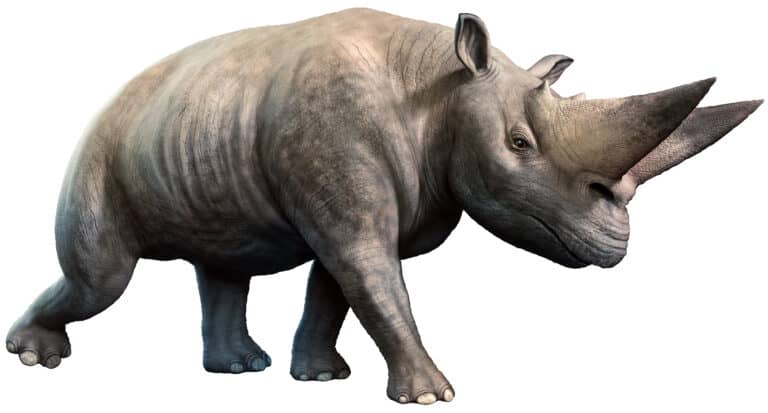Arsinoitherium Distribution and Habitat
All_the_Best · 7 months ago
Arsinoitherium lived about 56 million to 34 million years ago during the Eocene Epoch. However, more recent discoveries in other locations show that members of the genus survived into the Oligocene Epoch about 34 million to 23 million years ago. Experts in Egypt found the first fossils of the Arsinoitherium. Since these fossils were found around the Faiyum Oasis in Egypt, they decided to name their discovery after Queen Arsinoe I of Ancient Egypt. 2004 saw the discovery of new Arsinoitherium fossils by paleontologists researching in Ethiopia‘s Chilga region. The newly discovered species was named Arsinoitherium giganteus because, based on tooth comparisons, it was almost 25% larger than the initial fossils unearthed. In addition to these noteworthy discoveries, paleontologists have also discovered a number of fossil fragments (primarily teeth) in various regions of Africa and the Middle East that originate from an unidentified species of the genus. While alive, members of the Arsinoitherium genus were massive, slow-moving mammals. It is generally believed that they, like modern hippos, resided in swamps and semi-aquatic environments. Instead of swinging forward, their forelimbs were designed to pull firmly backwards. This trait is typical of animals that prefer to drag themselves across marshes, sticky soils, and other types of shallow water. As a testament to this, most of the fossils discovered thus far were found in sediments resembling warm, humid lowland forests with dense vegetation or coastal swamp settings. Arsinoitherium preferred to spend time in small groups that spent most of the time in the water. Its inability to straighten its legs implied that it chose to wade and swim rather than walk.
